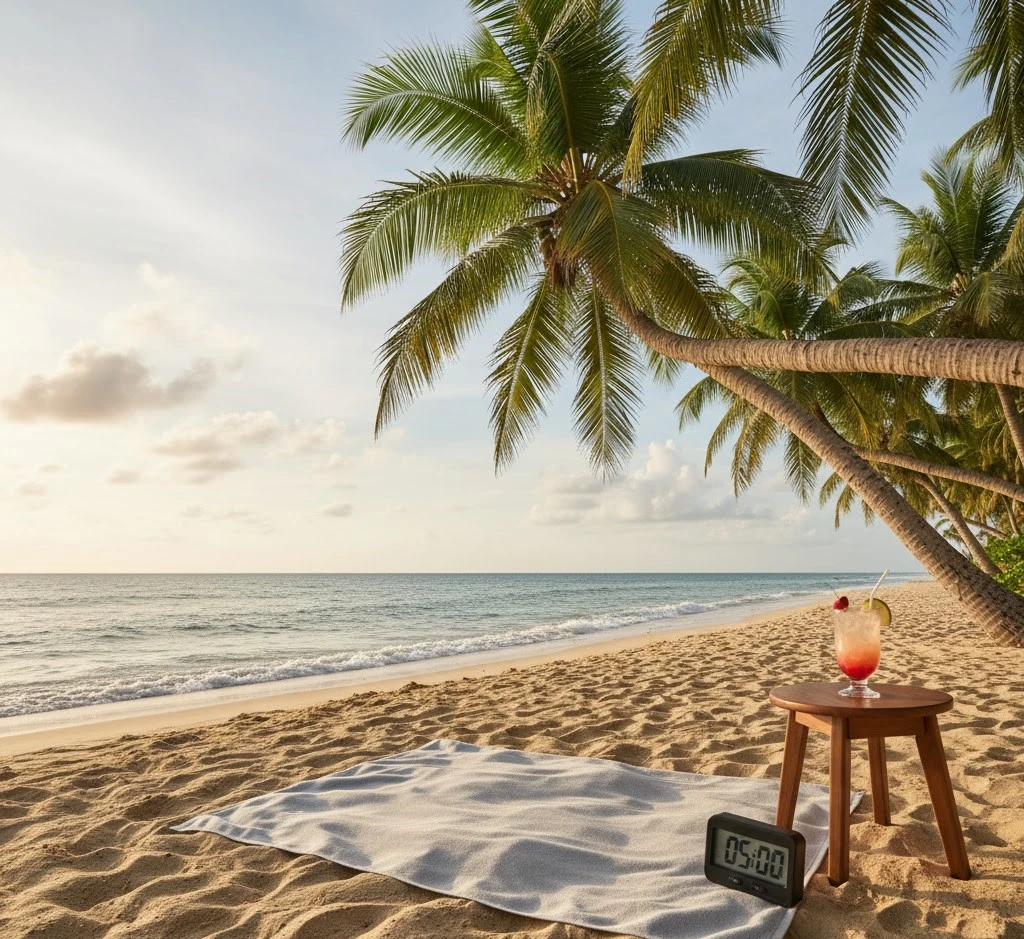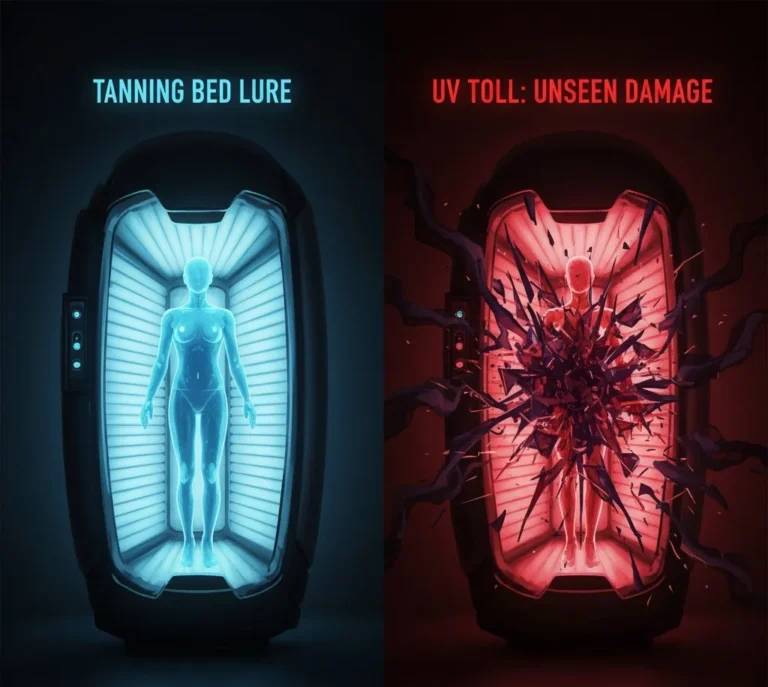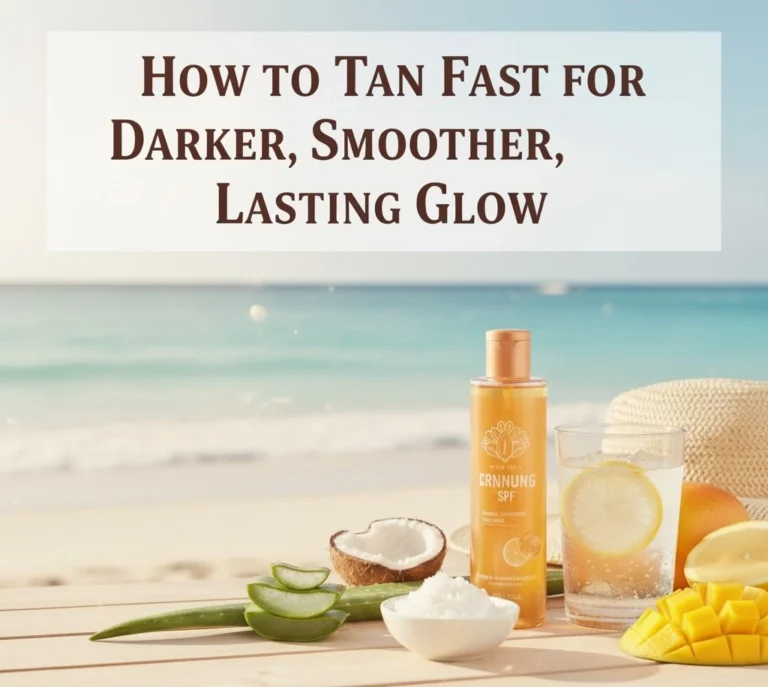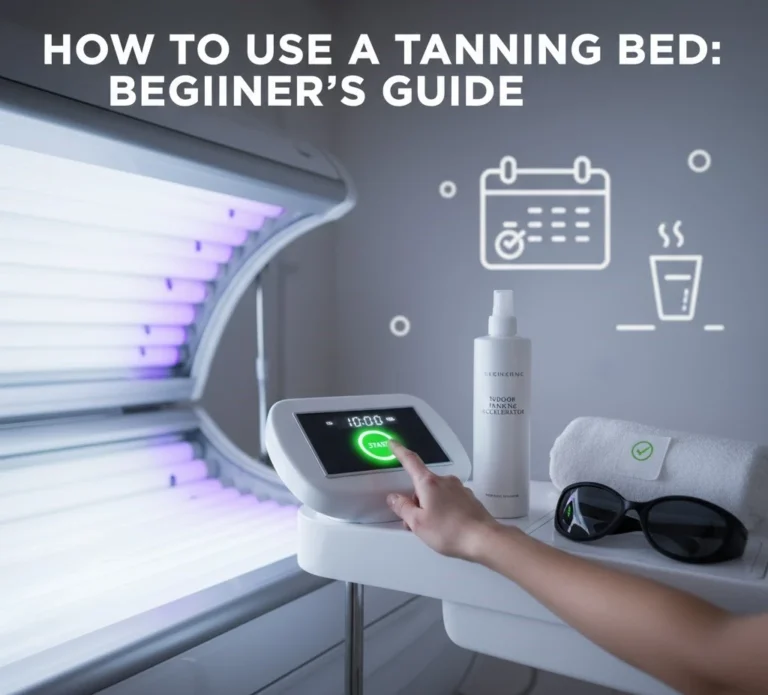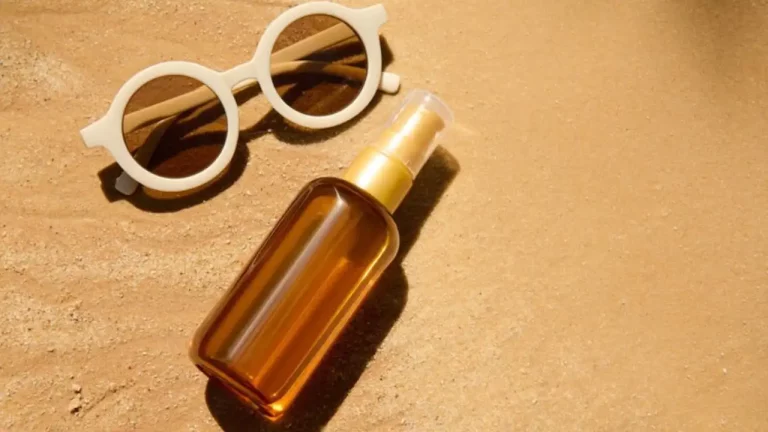How Long Should I Tan Outside to Get the Perfect Tan in Just a Few Minutes
You can achieve a beautiful, even tan outdoors in just a few minutes if you follow the right steps. Fast tanning doesn’t mean unsafe tanning. The secret lies in preparing your skin, picking the right time, and using proper sun protection. When you know how long you should tan outside based on your skin type and UV levels, you can get glowing results without harming your skin.
Understanding Fast Outdoor Tanning
Outdoor tanning works best when you understand how sunlight interacts with your skin. Knowing how melanin develops helps you control tanning speed and avoid burns. A balanced approach gives faster, safer, and longer-lasting color.
How Sunlight Triggers Melanin Production

Your tan comes from melanin, a pigment your body makes to protect skin from UV light. When UV rays hit your skin, they stimulate the production of melanin through a process that involves the enzyme tyrosinase. At first, you may notice a slight darkening within minutes, but deeper tanning happens as new melanin forms over the next day or two. Both processes give your skin color while protecting deeper layers from damage.
Why Some Skin Types Tan Faster Than Others
Your natural skin tone affects how long you should tan outside. People with darker complexions have more active melanocytes, the cells that create melanin. Fair-skinned people tan slower and burn faster because they have less natural pigment. Genetics also play a part. If your MC1R gene is less active, you may burn before you tan. Knowing your skin type helps you decide how long to stay under the sun safely.
How UV Index Affects Tanning Speed
The UV Index measures how strong the sun’s rays are. A higher number means faster tanning but also faster burning. When the UV Index is around 3 to 5, you can stay outside for about 30 to 45 minutes without burning. At 6 or 7, you may only need 15 to 30 minutes. When it’s above 8, the risk increases sharply, and your skin can burn in under 10 minutes. Always check the UV forecast before going out to know how long you should tan outside that day.
Preparing Your Skin Before You Tan
Good preparation sets the base for an even tan. Clean, smooth, and moisturized skin absorbs sunlight better. A few minutes of prep can make your tan develop faster and last longer.
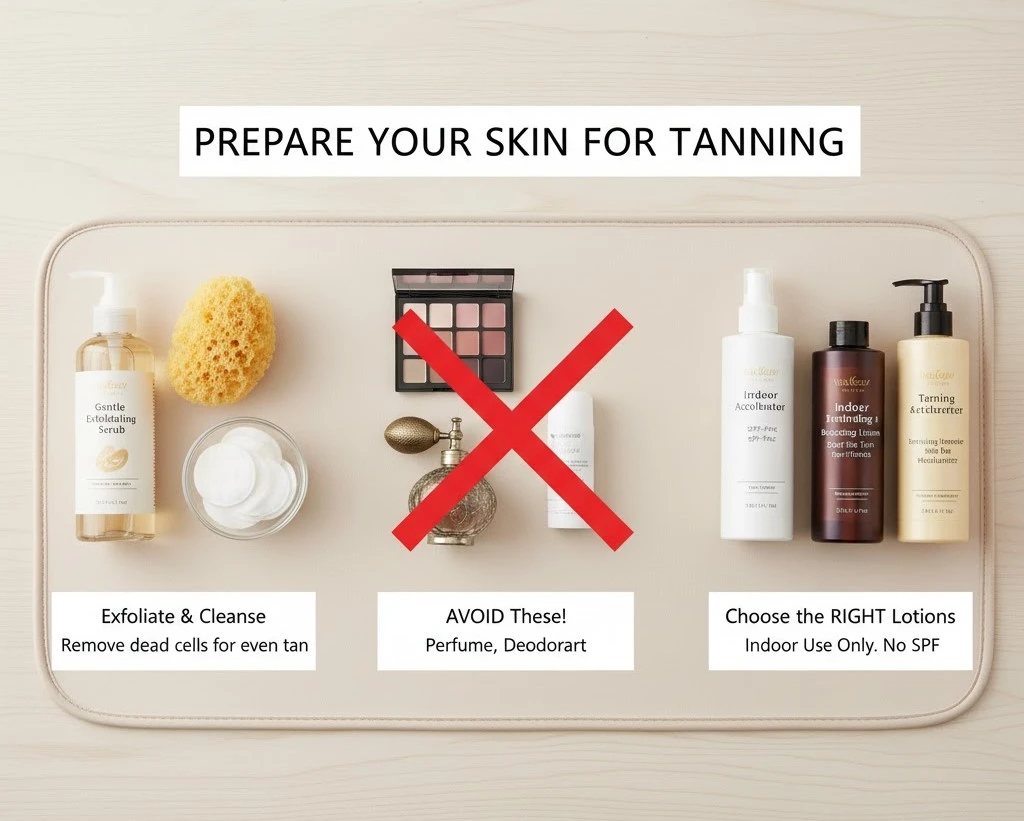
Exfoliate to Remove Dead Skin Cells
Exfoliating before tanning makes your tan smoother and longer-lasting. It removes dead cells that block even sun exposure. Use a mild scrub or exfoliating glove the day before tanning. Avoid harsh exfoliants right before going outside because they can make skin more sensitive to sunlight.
Apply Lightweight Moisturizer for Even Color
Hydrated skin tans more evenly. Apply a light, oil-free moisturizer after exfoliating. This prevents dryness and helps your skin absorb sunlight uniformly. Avoid heavy creams or thick lotions that may block UV rays.
Avoid Makeup, Perfume, or Oils Before Sun Exposure
Makeup, perfume, and body oils can react with sunlight and cause irritation or uneven spots. Some oils even increase burn risk by attracting UV rays. Keep your skin clean and bare before you step outside to tan.
Choosing the Right Time and Location
Timing decides how effectively you tan outdoors. The sun’s strength changes through the day, so choosing the right hour matters. The right location, with balanced sunlight and reflection, helps you tan faster without burning.
Table: Best Time and Place to Tan Outside Safely
| Condition | Best Time/Location | Why It Matters |
|---|---|---|
| Morning Sun | 8 AM to 10 AM | The sun is gentle, UV rays are mild, and skin can tan gradually without burning. |
| Midday Sun | 10 AM to 2 PM | Strongest UV rays give faster results but higher risk of burns. Limit exposure to 10–15 minutes. |
| Late Afternoon | 3 PM to 5 PM | Softer sunlight helps even out your tan and prevents overexposure. |
| Near Water or Sand | Beach or poolside | Surfaces reflect sunlight, increasing tanning intensity naturally. |
| Partial Shade | Under trees or umbrellas | Reduces harsh UV exposure, creating an even tan with less risk of redness. |
Best Time of Day for a Quick Tan
The best time for a fast tan is when UV levels are moderate to high but not extreme. Between 10 a.m. and 2 p.m., the sun is strongest, so you can tan faster, but you must limit your time to a few minutes. If you have fair skin, early morning or late afternoon is safer. Check the UV Index app or weather report before heading out.
How to Use Partial Shade for Balanced Results
You don’t have to lie under direct sunlight the whole time. Partial shade allows UV rays to reach you indirectly, which helps you tan gradually and reduces burning risk. You can sit under a tree or umbrella and still get an even glow.
The Role of Reflection from Sand or Water
If you’re at the beach or pool, sunlight reflects off water and sand. This reflection boosts UV exposure and speeds up tanning. The downside is a higher chance of overexposure, so shorten your tanning time if you’re near reflective surfaces.
Using the Right Sunscreen and Lotion
Sunscreen doesn’t block tanning, it protects you from damage. The right SPF and lotion speed up safe tanning by balancing UV exposure. Choosing suitable products keeps your skin healthy and glowing.
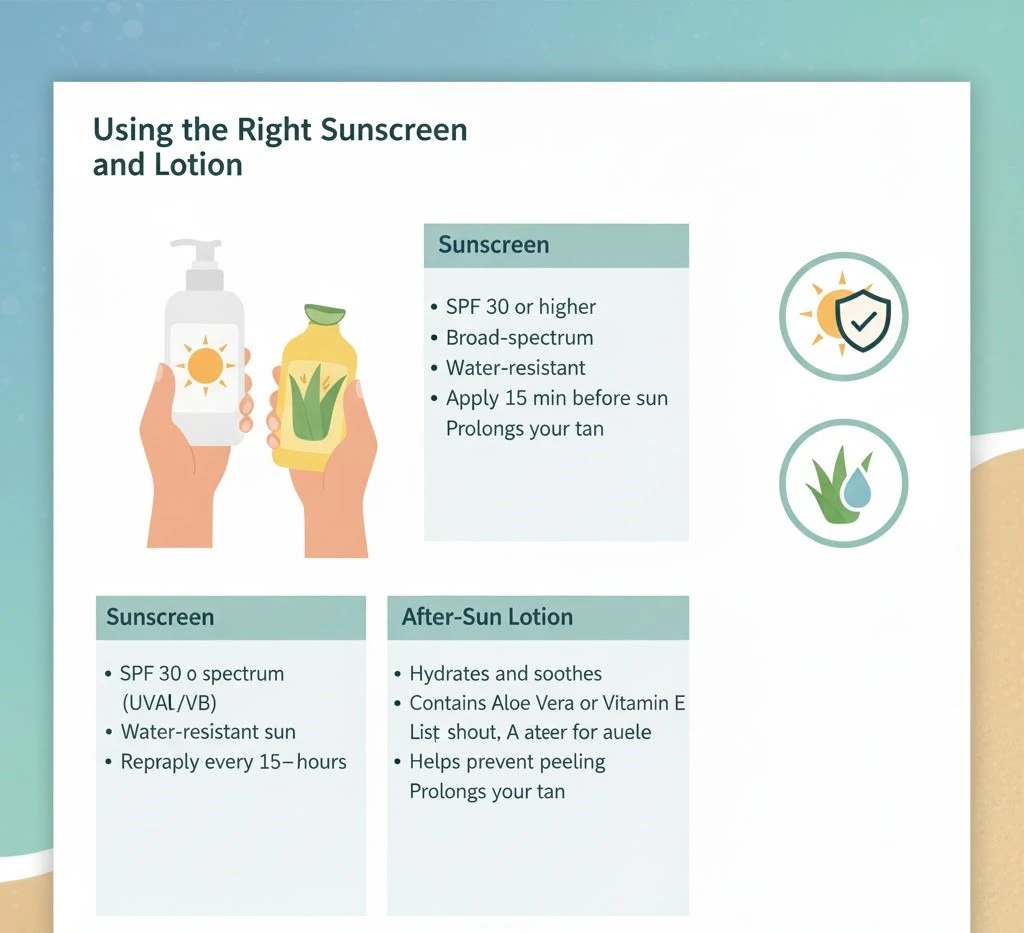
Why SPF 15 or 30 Helps You Tan Safely
Sunscreen doesn’t stop tanning. It prevents burns and allows your skin to darken safely. SPF 15 or 30 filters out the most damaging rays while letting enough UV through to trigger melanin production. Apply sunscreen 15 to 20 minutes before going outside, and reapply every two hours if you stay out longer.
Choosing Lotions That Boost Melanin Production
Some lotions contain ingredients that help your skin produce melanin more efficiently. Look for formulas that hydrate your skin and include antioxidants. A lotion that supports natural pigment formation while offering UV protection gives faster and safer results.
Avoiding Oils That Increase Burn Risk
Avoid using cooking oils or unprotected tanning oils on your skin. These can make you burn faster. If you want extra glow, use a tanning lotion with SPF protection instead. After tanning, you can use natural oils like coconut or olive oil to moisturize your skin, not before.
Maximizing Your Tan in a Few Minutes
You can tan quickly by using short, smart sessions. Small adjustments in position and hydration improve results. Consistency is better than overexposure when tanning outdoors.
Move Positions Every Few Minutes
Lying in one position for too long causes uneven color. Turn your body every few minutes to make sure all sides tan evenly. A balanced routine could be five minutes on your front, five on each side, and five on your back.
Keep Your Skin Hydrated During Sun Exposure
Bring a water bottle when tanning. Staying hydrated helps your skin maintain elasticity and reduces the risk of dryness and peeling. You can also mist your skin with water to stay cool.
Use Short, Repeated Sessions Instead of One Long One
It’s better to tan in short bursts than to stay in the sun for an hour straight. Two or three short sessions of 10 to 15 minutes each give better results and lower the chance of burns. Rest in the shade between sessions to let your skin recover.
Caring for Your Skin After Tanning
After-sun care locks in color and prevents dryness. Cooling and hydrating products soothe your skin after UV exposure. This step helps your tan last longer and stay even.
Cool Down Skin with Aloe or Hydrating Gel
Once you finish tanning, cool your skin immediately. Aloe vera gel or a soothing after-sun lotion helps calm redness and stops peeling. It also hydrates your skin to make the tan last longer.
Drink Water to Support Skin Recovery
After spending time in the sun, drink plenty of water. UV exposure and heat can dehydrate you. Water keeps your skin cells healthy and supports recovery.
Moisturize to Lock in Color and Prevent Peeling
Apply a nourishing moisturizer within 30 minutes after tanning. It locks in moisture, keeps your tan from fading too quickly, and prevents flaking. Continue moisturizing daily to maintain your glow.
Common Mistakes That Delay Tanning Results
Many people tan slower due to simple errors like overexposure or skipping sunscreen. Knowing what to avoid keeps your skin safe and your results consistent. Correcting these mistakes improves both tone and health.
Staying Too Long in Harsh Sun
Spending too much time in strong sunlight won’t give you a better tan, it will only burn your skin. Burned skin peels off, taking your tan with it. Always respect your limits and get out of the sun before your skin starts feeling hot or tight.
Ignoring Skin Type Differences
Your friend’s perfect tanning time might not work for you. Lighter skin burns in as little as 10 minutes, while darker tones can stay longer. Adjust how long you tan outside according to your own skin.
Using Wrong Products Before or After Sun
Applying heavy creams, perfumes, or oils before tanning can cause uneven results. Forgetting to moisturize after can lead to peeling and dryness. Use lightweight sunscreen before and calming lotion after every session.
Natural Alternatives to Speed Up Tanning
Natural boosters like certain foods and light oils can support your tan. These methods help you enhance color without harsh chemicals. They work best when paired with good sun habits.
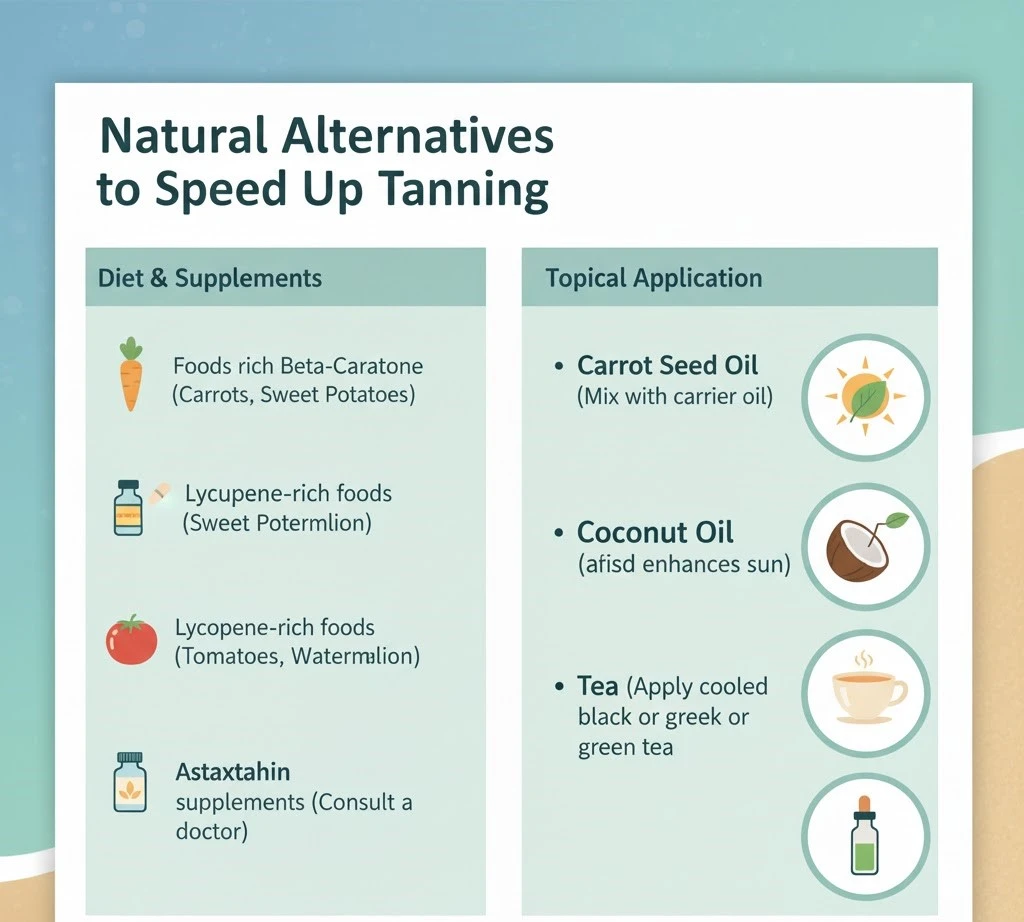
Eating Beta-Carotene Rich Foods
Carrots, sweet potatoes, spinach, and mangoes contain beta-carotene, which gives your skin a healthy glow and can make your tan look richer. Include these foods in your diet to support skin color naturally.
Using Coconut or Olive Oil Sparingly
You can use a small amount of coconut or olive oil after tanning as a moisturizer. It helps seal in hydration and adds shine. Avoid using these oils during tanning because they increase burn risk.
Taking Short Walks During Peak Sun Hours
You can tan gradually by taking short walks during moderate sunlight hours. This method helps you build color slowly without lying still for long. It’s ideal if you want a subtle, natural tan over time.
When to Avoid Quick Outdoor Tanning
Sometimes it’s best to skip tanning sessions. Harsh UV levels or sensitive skin conditions can make tanning unsafe. Knowing when to rest your skin prevents damage and irritation.
Extremely High UV Index Conditions
Avoid tanning when the UV Index is above 8. Skin can burn in minutes under such conditions, especially for fair tones. Wait until UV levels drop to safer ranges.
Sensitive or Fair Skin Types
If you have light or sensitive skin, limit your exposure to only a few minutes and always wear sunscreen. Your skin is more prone to damage, and tanning too fast can cause burns.
Recent Skin Treatments or Sunburns
If you’ve had a peel, laser treatment, or a recent sunburn, skip tanning altogether until your skin heals completely. Exposing damaged skin to UV rays increases irritation and risk of scarring.
Conclusion
Getting the perfect tan outside in just a few minutes is possible when you do it the smart way. Prepare your skin with exfoliation and moisture, choose the right time when UV levels are moderate, and always use sunscreen. Move often, stay hydrated, and keep your sessions short. Care for your skin afterward with soothing gels and daily moisturizing.
When you understand your skin type and know how long you should tan outside, you can enjoy fast results without harm. A good tan should never come at the cost of your skin’s health. Glow responsibly and let your skin shine naturally.
FAQs
How long should I tan outside to start seeing results?
Most people begin to see a tan after 10 to 30 minutes, depending on skin tone and UV strength. Fair skin may take a few short sessions to show noticeable color.
Will sunscreen stop me from tanning?
No, sunscreen protects your skin while still allowing gradual tanning. Using SPF 15 or 30 helps prevent burns and gives you a safer, more even tan.
Can I tan under shade?
Yes, UV rays reflect off surfaces like sand and water, so you can still tan under partial shade. It’s slower but safer for your skin.
Is there a safe UV index for tanning?
Moderate UV levels between 3 and 5 are considered best for controlled tanning. High UV levels tan you faster but increase risk.
How do I maintain my tan once I have it?
Keep your skin moisturized, drink plenty of water, and avoid overexposure. Use hydrating lotions daily and limit strong sun contact to make your tan last longer.

